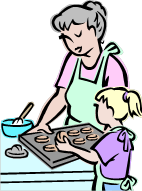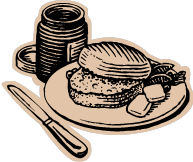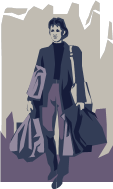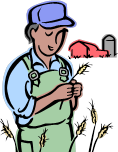Archive for the ‘Norway’ Category
A Surprising Connection
 During the past year, my husband/tech advisor and I have become active members of our local Sons of Norway chapter. Among other Norwegian cultural pursuits, the lodge offers access to a Norwegian genealogy study group. They meet once a month to exchange information on researching Norwegian families.
During the past year, my husband/tech advisor and I have become active members of our local Sons of Norway chapter. Among other Norwegian cultural pursuits, the lodge offers access to a Norwegian genealogy study group. They meet once a month to exchange information on researching Norwegian families.
At my first genealogy meeting, I recognized another woman whom I had seen at other genealogy events around town. I had not realized she is a fellow Norwegian. I amazed to learn that her family had settled in the same rural Montana county as my Bentsen family. We both have roots in Sheridan County.
Anyone doing research in that county knows that the bible of information is a series of books called Sheridan’s Daybreak. My own relatives contributed articles, but no copies of either the writings or the book series came down to me. Today the books sell for hundreds of dollars, so I am not in a hurry to purchase them. Denver Public Library does not own a set, and no place will send them out on inter-library loan. As far as I know, they have not been digitized.
But guess who has a complete set of the books? The nice woman at the Sons of Norway lodge! She has offered to let me search it for my family articles. I am thrilled to find out all about those collateral relatives, the Bedwells, Flemings, Overbys, and Scollards.
All homesteaded in the harsh climate of northeastern Montana at the turn of the last century. On this land close to the Canadian border, they grew wheat. My family still owns the original homestead in addition to other acreage they picked up along the way. I am so eager to find out about their lives by reading Sheridan’s Daybreak.
Thank you, Donna!
A Successful Approach to Foreign Research
 This weekend I will attend a meeting of Norwegian genealogy researchers. As I prepare for the meeting, I began thinking about what a great opportunity it is.
This weekend I will attend a meeting of Norwegian genealogy researchers. As I prepare for the meeting, I began thinking about what a great opportunity it is.
Here in the melting pot of America, many genealogists descend from more than one ethnic heritage. Once you “jump the pond” you must learn to do research in foreign countries. Unless your family was British, these records are not in English. What do you do?
Aside from hiring someone else to do your research, you must learn to do it yourself. My husband/tech advisor and I have encountered this challenge with our Danish, Dutch, English, Finnish, German, Norwegian, and Scottish lines. We have followed several strategies for learning to do our foreign research:
- We join local groups that focus on a specific ethnicity. Our Sons of Norway lodge includes a genealogy club (the one we will attend this weekend) for pursuing our mutual interest. WISE (Wales, Ireland, Scotland, England) and a Germanic research group both meet monthly at the Denver Public Library. A local Finnish club offers one-on-one help with document translation.
- We attend genealogy conferences targeting an ethnic audience. Our local Palatines to America chapter holds twice-yearly seminars that educate us on Germanic research. The National Genealogical Society annual conference in the states often includes a research track for some ethnic group.
- We consult the research wiki on the Family Search website (https://familysearch.org/learn/wiki/en/Main_Page).
- We take advantage of opportunities for collaboration with genealogists in our countries of interest. For example, we have found Norwegian research help and other researchers via the DIS-Norge website (www.disnorge.no).
People will tell me that I also should be on Facebook to find like-minded researchers. This resource probably helps a great many people, but to me it looks like quite an eater of time. Not appealing to me.
Instead, I will trot over to the Sons of Norway research group on Saturday and interact face-to-face with other researchers. We will trade research tips, tell a Norwegian joke or two, and enjoy some Norwegian-style fellowship. This is my type of social network, and I know it will help me along with my own research.
Fattigmand Time
 Christmas baking season has arrived again. I plan to make some different types of cookies, but then everyone does that. For something different, my husband and I always try to make one traditional Scandinavian food.
Christmas baking season has arrived again. I plan to make some different types of cookies, but then everyone does that. For something different, my husband and I always try to make one traditional Scandinavian food.
The food we make most years, from Norway, is fattigmand bakkelse. More of a fried bread than a cookie, these resemble the Mexican sopapilla we find in Colorado.
Norwegians love to have fattigmand for Christmas. My Norwegian grandfather, Bjarne Bentsen (1906-1986) insisted that his Finnish wife Martha Mattila (1906-1977) learn to make these treats when they first married. My husband remembers his Norwegian grandmother Anna Nelson Hjelmstad (1890-1976) making them, too, but his own mom, a German, never tried it.
My mother and father used to work together to make fattigmand every year. We kids needed to do our part to help, too. It takes a lot of rolling and cutting the stiff dough. Then someone deep fries each piece. Some folks dust them with powdered sugar, but we never did.
To be honest, I never liked fattigmand all that much as I grew up. I usually gave my share to my brother. But my husband liked fattigmand, so early in our marriage I made the effort at Christmas to make some. Now I find that I like to eat them as much as he does.
One of these days before Christmas we will invite our grandchildren over to learn how to make fattigmand, too. Here is our recipe, brought from Norway by my great-grandmother Sofie Bentsen (1878-1966):
Fattigmand Bakkelse
8 whole eggs + 4 egg yolks
12 level Tbsp. sugar
12 level Tbsp. sweet cream
4 Tbsp. brandy
½ tsp. baking powder
½ cup melted butter
1 rounded tsp. ground cardamom
1 level tsp. cinnamon
Mix in order given. Add enough flour (about 6 cups) to make a soft dough. Put in a cold place for 2-3 hours. Roll out very thin. Cut in diamond shapes, make a slit in center of each, and pull one end through slit. Fry in deep lard until golden brown. Use medium heat.
Lingonberries
 Last night I made some scones for today’s breakfast. I served them with a lesser-known topping, lingonberry jam. I enjoy eating lingonberries now and then because they are really good, and they remind me of my Norwegian heritage.
Last night I made some scones for today’s breakfast. I served them with a lesser-known topping, lingonberry jam. I enjoy eating lingonberries now and then because they are really good, and they remind me of my Norwegian heritage.
According to Wikipedia, lingonberry jam is a staple of Scandinavian cuisine. The berries grow abundantly in the inland forests there. People often gather them and prepare a fresh jam using just the berries, sugar, and a small amount of water. They put it on everything from pancakes to meatballs.
I used to have a hard time finding the jam here in the Denver area. Sometimes I made the long drive to the Sons of Norway lodge in Lakewood to buy it from their gift shop. When I did, we savored every bite of this rare treat.
In recent years, lingonberry jam has appeared more often on the shelves of my local supermarket. The IKEA stores sell it, too. Consequently, people are becoming more familiar with this Scandinavian delicacy.
We have begun keeping a jar of lingonberry jam on our pantry shelf. You never know when one of us will get a craving for it, just like I did this morning.
Learning the Culture
 Over the years I have spent a great deal of time digging into my roots in what my family referred to as the “old country”—Finland and Norway. As I researched the lives of these ancestors, I became curious about how they lived and what they did for entertainment. Maybe they engaged in artistic pursuits. My curiosity led me to learn a little about Finnish and Norwegian folk art forms.
Over the years I have spent a great deal of time digging into my roots in what my family referred to as the “old country”—Finland and Norway. As I researched the lives of these ancestors, I became curious about how they lived and what they did for entertainment. Maybe they engaged in artistic pursuits. My curiosity led me to learn a little about Finnish and Norwegian folk art forms.
Eventually I felt the urge to try these art forms myself. At some point I acquired a Finnish kantele, a plucked string instrument that resembles a zither. I still have not found the time to learn to play it.
I had more success when I discovered Norwegian Hardanger embroidery, a counted and drawn type of whitework worked on even weave fabric. I already had learned some basic embroidery skills from my mother, and I found it enjoyable.
As an adult, I took a class on Hardanger embroidery, and I finished my first piece. Then I did another one, and yet another until I found myself stitching an entire window valance. It took me two years to complete, and it hangs in my office today.
When my husband/tech advisor and I joined our local Sons of Norway lodge (http://www.fjelldalen.com/) earlier this year, we learned that they place a great emphasis on learning Norwegian cultural skills. One is genealogy and another is Hardanger embroidery. Right up my alley!
A new friend of mine in the Lodge has created many beautiful Hardanger pieces. She wins first or second place every time she enters her stitchery in a Sons of Norway (http://www.sofn.com/home/index.jsp) competition. I am thrilled she has offered to coach me in earning my Hardanger profiency pins from the organization. As I work through the skills hierarchy, perhaps I too can create something good enough to enter in competition.
I hope I am continuing a family tradition. My Norwegian great-grandmother Sofie Bentsen purportedly was adept at Hardanger. Although I never met her, I can picture her now as she stitched away in a little fishing village on a Norwegian fjord. I hope she is proud that I am trying to preserve this beautiful art form.
Lives Cut Short
 This week I found another one, another husband and father who died too soon.
This week I found another one, another husband and father who died too soon.
My family tree seems sprinkled with men who died in their prime, leaving behind wives and children. Imagine the struggle these survivors faced without their breadwinners.
I have found these sad records wherever I have done research, from America to Norway and Finland. These stories will tug at your heart:
- Henric Miettin (abt. 1804-1836). He lived in Halivaara, Kuopio, Finland and passed away at age 32 due to a fever. His widow Anna Toivain, left with at least four children who were not yet teenagers, soon remarried.
- Anders Bentsen (1823-1857). Anders died at age 33 in Bø, Nordland, Norway, also from a fever. His wife, Anne Larsdatter, seemed unable to raise their two small children because both lived with other families after their father’s death. Anne eventually remarried.
- Antti Abelson Mattila (1826-1882). Although perhaps not-so-young at 55 when he died in Viipuri, Finland from tuberculosis, Antti still had six children under 18 at the time. At least one daughter already suffered from tuberculosis, too, and the youngest child was just four years old. Antti’s widow Elisabeth Myllynen made her living by laying out the dead, taking her young son along with her on these jobs.
- Owen Herbert Reed (1896-1935). At age 38, Herb died during the Depression in a vehicle accident near Brighton, Colorado. His 18-year-old daughter promptly left home to get married. His widow Grace and their five sons were forced to leave their family home in Wyoming and relocate to Colorado where a brother-in-law set them up in a house. All the boys immediately had to go to work, including my then-8-year-old father who helped deliver milk.
Since I descend from all these unfortunate men, I also descend from the widows facing the need to make a living, and from children who grew up without a parent. How did they ever keep going despite broken homes and hard times? It makes me sad every time I read of another ancestral family enduring this fate.
I feel so fortunate that it did not happen to me. I am able to visit my 87-year-old father regularly; I live happily with my husband; my children are grown. Life turned out better for me than it did for some of my ancestors.
The Push and The Pull
 My mother’s grandparents emigrated from the Nordic countries in the early 20th century. I know a lot about their lives in America but not so much about their lives in the old country. They were young married couples when they arrived in the United States. Immigrants are said to have been pulled here because they wanted a better life. But what, exactly, did they leave behind? What pushed them away from their homeland?
My mother’s grandparents emigrated from the Nordic countries in the early 20th century. I know a lot about their lives in America but not so much about their lives in the old country. They were young married couples when they arrived in the United States. Immigrants are said to have been pulled here because they wanted a better life. But what, exactly, did they leave behind? What pushed them away from their homeland?
Family members spoke of how my Norwegian ancestors, Ole Bentsen and Sofie Sivertsdatter, had left their home farms in Bø and Eidsfjord when they grew up to find work in Stokmarknes, a larger city in the Vesterålen District of Norway. What did they do there? Both were literate but had no higher education. They must have worked as laborers of some sort. Stokmarknes lies in the cod fishing area of Norway, so perhaps Ole worked on a boat, a trade he could have learned from his fisherman father.
What did Sofie do? Domestic help? Fish processing? I know she had some baking skills. After she settled on a Montana homestead, she made bread not only for her own family but also for a bachelor neighbor. I also know that just before moving to Stokmarknes, she had tended sheep on her uncle’s place. Maybe she put those skills to use on one of the farms surrounding Stokmarknes. Bervik perhaps, where she lived in the months after her marriage and where her daughter Riborg was born.
I know less about the background of my Finnish ancestors, Alexander Mattila and Ada Alina Lampinen. They said only that they were from Viipuri which was the second-largest city in Finland at the time. In looking at their records, I find that neither of them was born there. It appears that they, too, were born elsewhere, Alex in the rural parish southeast of Viipuri, and Ada in Juuka parish north of there. As young adults they, too, went to the closest city, Viipuri, probably to find work.
So what work did they do? Alex was listed as a laborer when he emigrated, but no particular line of work was specified. Later in life, he worked as a carpenter. I do not know whether he acquired that skill in Finland or in the United States.
As for Ada, I do not know what she may have done in Viipuri. Worked in a shop? Domestic help? My mom remembered her baking skills—homemade bread and cakes.
Both of these couples worked hard, but obviously they saw no opportunity in their home countries. They felt the push of wanting something better. The Norwegians wanted their own land, impossible to acquire as part of the laboring class in Norway. The Finns may have wanted to get away from their strife-torn country that suffered from hunger and disease. Under the harsh rule of the Russian czar, worker unrest was brewing, food was scarce, and public health did not seem to be a priority. Alex’s father and one sister had both died of tuberculosis.
So America beckoned. Ole and Sofie followed their dream to live in a country that gave away land to people willing to work had for it. Relatives in America urged Alex and Ada to come and settle in a healthy Finnish community in Minnesota where there was plenty of work, food, and political stability. Both couples saved their money and took steamships to a new land to build a new life. And they never talked much about the old one.
Remembering Otto Sigurd Bentsen, 1918-2013
 Every year about this time, the media puts out lists of celebrities who passed away during the year. Locally, my church holds a Service of Remembrance on the last Sunday of the year to remember those connected to our congregation who have died this year. We all seem interested in taking this opportunity to remember those we have lost before we turn the calendar page to another year.
Every year about this time, the media puts out lists of celebrities who passed away during the year. Locally, my church holds a Service of Remembrance on the last Sunday of the year to remember those connected to our congregation who have died this year. We all seem interested in taking this opportunity to remember those we have lost before we turn the calendar page to another year.
My family said good-bye to just one soul in 2013, my great-uncle Otto Sigurd Bentsen. He lived a long life, and died in January at the age of ninety-four.
Otto saw many changes during his lifetime. He was born on his father’s homestead southeast of Redstone, Montana. He went from helping his dad farm with horses to watching his daughter and son-in-law run a highly technical farming operation on that same land. During his lifetime, his farm received an award from the State of Montana for keeping the farm in one family for 100 years. Otto was very proud that the farm had only two owners during that time, his father and himself. They kept the farm going through two world wars and the Depression.
Otto worked hard to live the life his parents hoped for their children when they emigrated from Norway in the early 20th century. He went to high school, served in World War II, married, and raised a family on his own land. He was a respected member of his church and community.
Otto was the last member of his generation in our family. With his passing, a new generation takes its place as the family elders. Otto set a good example for all of us to follow.
Our Genealogy Christmas Gifts
For the past several years, my husband/tech advisor and I have prepared genealogy-related Christmas gifts for our extended families. This gives us the incentive to digest our findings for the year and distribute the information. Here is what we will send out this year:
- For the Hjelmstad and Walz descendants, a map detailing the European points of family origin in Denmark, Germany, the Netherlands, and Norway. The map also shows emigrants’ ports of departure in Europe and ports of arrival in the United States.
- For the Bentsen descendants, family group sheets and biographical sketches for the members of the Norwegian immigrant generation and a copy of the only photo I possess of one of the couples, Karen and Nick Bentsen.
- For my husband’s Norwegian family, this year’s rosemåling Christmas ornament from the Sons of Norway. http://www.sofn.com/
Last night we put the finishing touches on our maps and documents. Everything will be ready to mail out soon!

How to Search in the Norway Digital Archives
 Attention, all you Norway researchers! As promised, here is the link to my husband/tech advisor’s guest post on UpFront with NGS: http://upfront.ngsgenealogy.org/2013/11/using-norwegian-digitalarkivet-search.html
Attention, all you Norway researchers! As promised, here is the link to my husband/tech advisor’s guest post on UpFront with NGS: http://upfront.ngsgenealogy.org/2013/11/using-norwegian-digitalarkivet-search.html